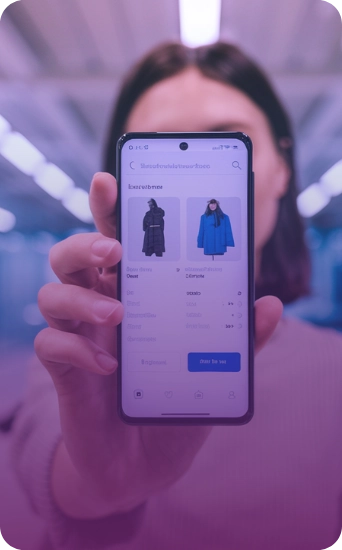Over the years, the evolution of the market has shaped marketing strategies to adapt to the way consumers relate to brands. Since its popularization by Philip Kotler, the initial model of the 4Ps (Product, Price, Place and Promotion) for the 7Ps (adding People, Processes and Physical Evidence), companies have had to adapt to a new scenario in which the customer experience has come to play a central role.

More recently, the concept of H2H (Human to Human) has gained relevance, reinforcing the need for deeper communication that breaks down the boundary between companies and consumers, reaching the people behind the relationship. At the same time, consumer behaviour in e-commerce has also changed dramatically, driven by digitalization and increased demand for more personalized and direct shopping experiences.
In this scenario, in which the digital consumer is more and more inclined to have direct contact with the brand, the industry's entry into e-commerce has become extremely necessary, not only in order to eliminate intermediaries, but above all to build closer and more meaningful relationships with its customers.
The evolution of 4Ps for the 7Ps: the adaptation of marketing
The 4Ps model was the foundation of modern marketing, providing guidelines for companies to structure their strategies, guaranteeing a Product sold at a Price fair, available in a Square strategic and Promoted in order to inform and persuade their audience. However, with growing competition and an appreciation of the consumer experience, the 7Ps were introduced, adding:
- People: focus on customer service and experience, such as humanized support via WhatsApp to help with purchases in an online store.
- Processes: optimization and operational efficiency, such as same-day deliveries.
- Physical Evidence: reinforcement of the brand's perception in the physical and digital environment, such as differentiated packaging, personalized messages and exclusive design.
The digitalization of the market has brought about a new reality in which interactions are no longer exclusively transactional, but require a more personalized and humanized approach.
H2H and the humanization of customer relations
The concept of H2H (Human to Human) arose in response to the need to make interactions between brands and consumers more authentic. Unlike the B2B (Business to Business) and B2C (Business to Consumer) models, which prioritize corporate and transactional relationships, H2H proposes a more direct, humanized and empathetic dialogue. A product that assertively meets a certain demand is no longer the only point to be assessed; now, consideration is also given to who the CEO behind that product is, the people involved in its production, their values and how they relate to the consumer and the world.
In e-commerce, this approach is fundamental, as consumers expect personalized shopping experiences that convey trust. This includes:
- Humanized serviceeven if automated by AI;
- Customization offers and recommendations based on customer behavior;
- Transparency and reliability in the information provided by the brand.
The H2H strategy allows companies to connect more directly and meaningfully with their audience, strengthening loyalty and engagement.
The industry's need for direct-to-consumer (D2C) e-commerce
With the evolution of consumer behavior and the search for more control over the shopping experience, the sales strategy D2C has become essential for industries. This model, combined with the H2H concept, allows brands to build closer relationships with their customers, offering unique and differentiated shopping experiences. This not only results in greater profitability and operational control, but also an increase in customer loyalty and perceived value.
The main benefits of the model D2C include:
- Total control over the customer experience: the industry now directly manages all stages of the buying journey, from marketing to after-sales.
- Greater public awareness: With access to direct consumer data, it is possible to personalize offers, improve products and anticipate trends.
- Reduced dependence on retailers: by eliminating intermediaries, the industry gains greater autonomy in pricing and product launch strategies.
- Direct relationship with the consumer: allows for more effective loyalty campaigns and the building of communities around the brand.
The evolution of marketing, of 4Ps for the 7Ps and then to the H2HThis reflects the need for companies to adapt to new consumer behavior. In e-commerce, this adaptation becomes even more critical, especially for the industry that seeks to sell directly to the end consumer.
The transition to D2C requires not only a change in sales strategy, but above all a transformation in mentality, which must be centered on the consumer. The aim is to promote personalized and authentic experienceswith open communication, allowing the customer to realize that there are humans on the other side of the relationship.
In such a technological environment, in which everything can now be solved using a cell phone and which increasingly allows some human interactions to be replaced by technology, it sometimes seems contradictory that the great appeal is human-to-human interaction.
But the idea is precisely to think that new technologies allow us to bring together audiences that, in a traditional physical sales relationship, would never be within our reach. In other words, technology should connect consumers, not alienate them. That's why H2H is so relevant to this new consumer, and the industry should waste no time in making itself ever more present.










